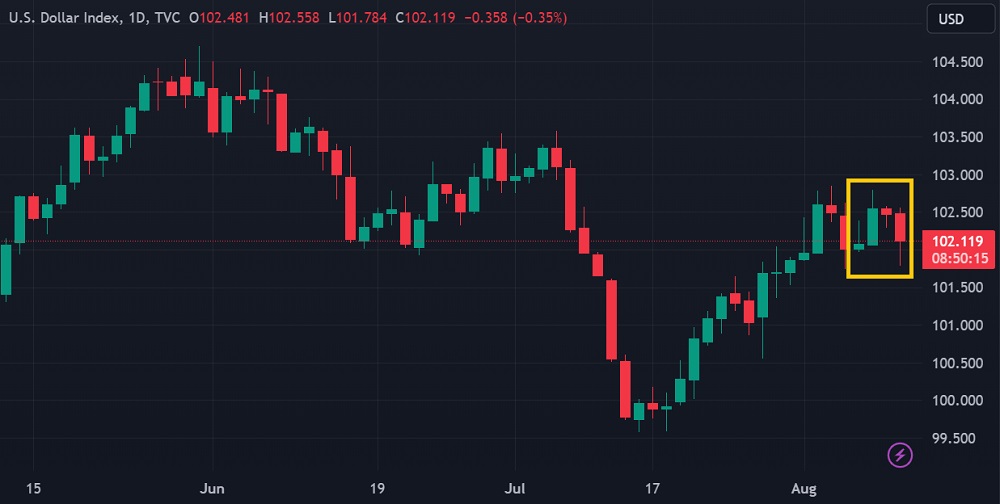The US inflation confirms the minimal prospects for the next Fed interest rate hike. However, analysts argue that the effects of the data are less significant.
Two important economic data from the United States released tonight again missed the previous expectations. As a result, the greenback weakened moderately against most major currency pairs. The US Dollar Index (DXY) even briefly tumbled to a four-day low at 101.78.

The Consumer Price Index (CPI) of the United States experienced a monthly growth of 0.2% in July, in line with consensus estimates and precisely the same as its growth in June—unfortunately, the CPI for the core goods group corrected from 4.8% to 4.7% annually.
Unemployment claims data also unexpectedly increased for the week ending on August 5th. The number of claims reached 248k, whereas the previous consensus had only projected 230k.
This series of data confirms the market's doubts about the prospects of the next Fed interest rate hike. Although Fed Chairman Jerome Powell stated that there is still a possibility of further rate increases, the urgency for such a policy is diminishing due to the weakening of US inflation.
"Markets are doubling down on 'soft landing' bets this morning after U.S. consumer inflation slowed as expected, reducing the need for further monetary tightening from the Federal Reserve," wrote Karl Schamotta, chief market strategist, at Corpay, in a research note after the data.
The market was startled, causing the EUR/USD exchange rate to soar briefly to its highest level in ten days. AUD/USD, GBP/USD, and NZD/USD also briefly rose, leading to a decline in the DXY. However, these reactions quickly subsided, and the DXY rebounded to the range of 102.10.
Despite the initial market reactions, several experts argue that today's data doesn't indicate significant changes. The declines in US employment and inflation are not substantial enough to justify a decision for a steady or increased interest rate. Therefore, they believe the Fed will monitor other economic data until the next FOMC meeting on September 19-20, 2023.
"Inflation is grinding back towards the target and the labor market is slowly cooling," said Ryan Brandham, head of global capital markets for North America at Validus Risk Management.
"But the FOMC will want to see yet more data before deciding in September if progress has been fast enough to warrant a pause or if the balance of risks calls for another hike to ensure inflation targets are met," he adds.

 Dedicated FREE FOREX VPS
Dedicated FREE FOREX VPS Free FOREX Virtual Private Server
Free FOREX Virtual Private Server MT4 Demo Contest, Get $500
MT4 Demo Contest, Get $500 Sign Up for an Account, Claim 60% Deposit Bonus
Sign Up for an Account, Claim 60% Deposit Bonus Free MT4/MT5 VPS 2024
Free MT4/MT5 VPS 2024 Send E-mail and Get Free Merchandise
Send E-mail and Get Free Merchandise $1K Refer a Friend Bonus for Pepperstone Pro clients
$1K Refer a Friend Bonus for Pepperstone Pro clients Maximize Your Earnings with 100% Deposit bonus
Maximize Your Earnings with 100% Deposit bonus Trade to Win, $5,000 Monthly Demo Contest
Trade to Win, $5,000 Monthly Demo Contest Claim 30% + 15% Deposit Bonus from LiteFinance
Claim 30% + 15% Deposit Bonus from LiteFinance






